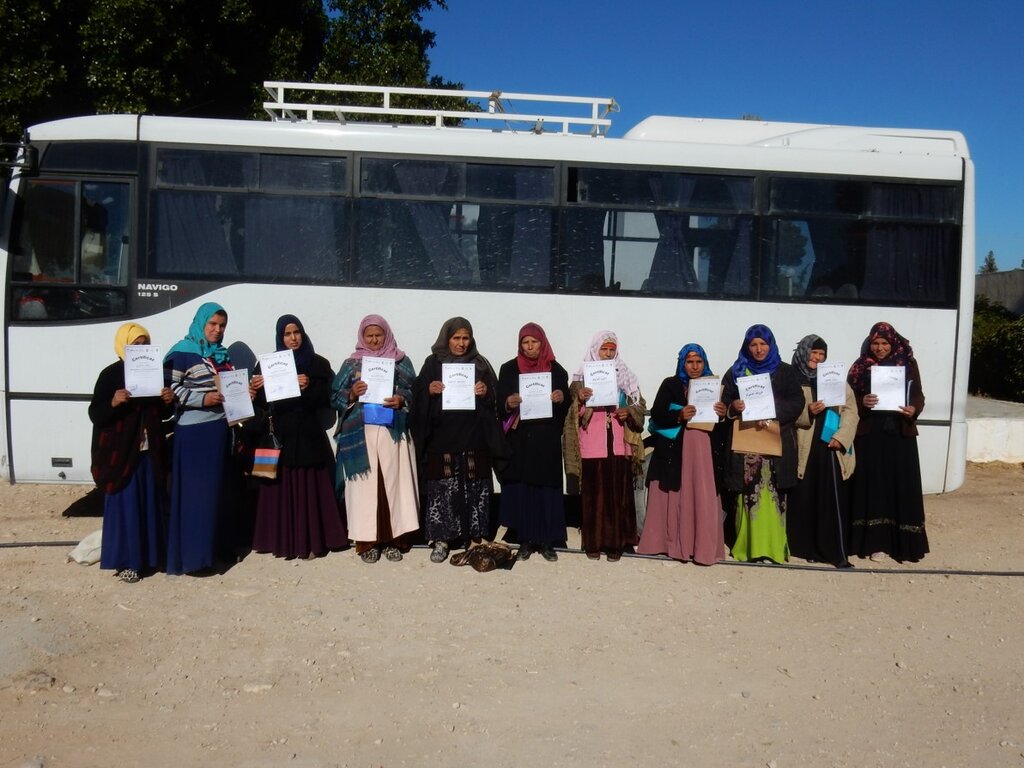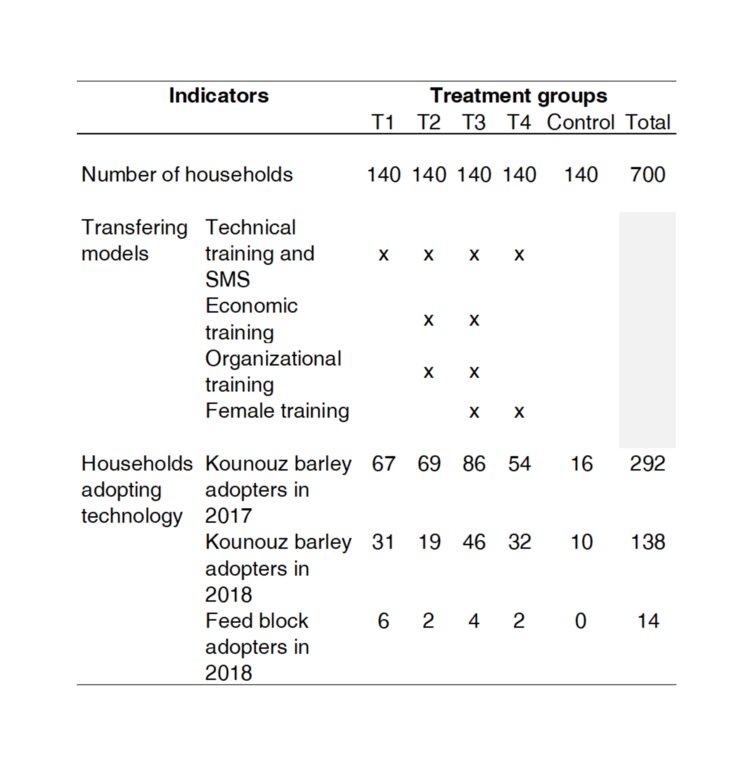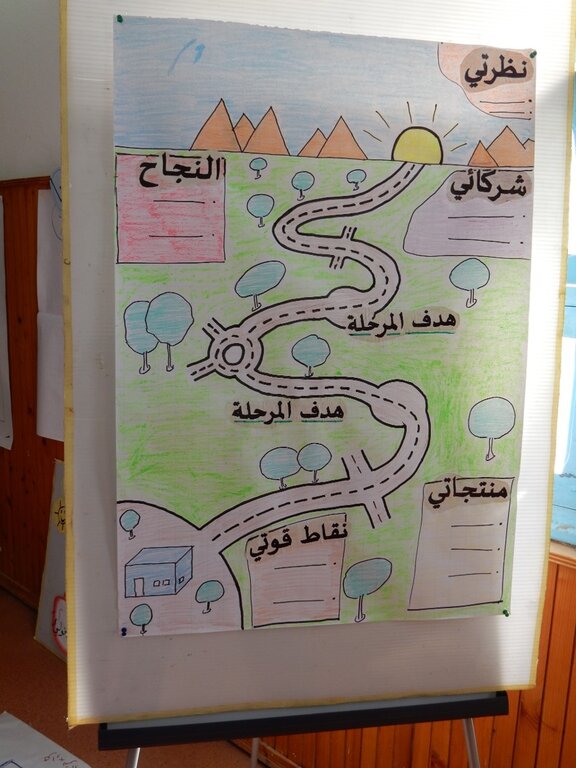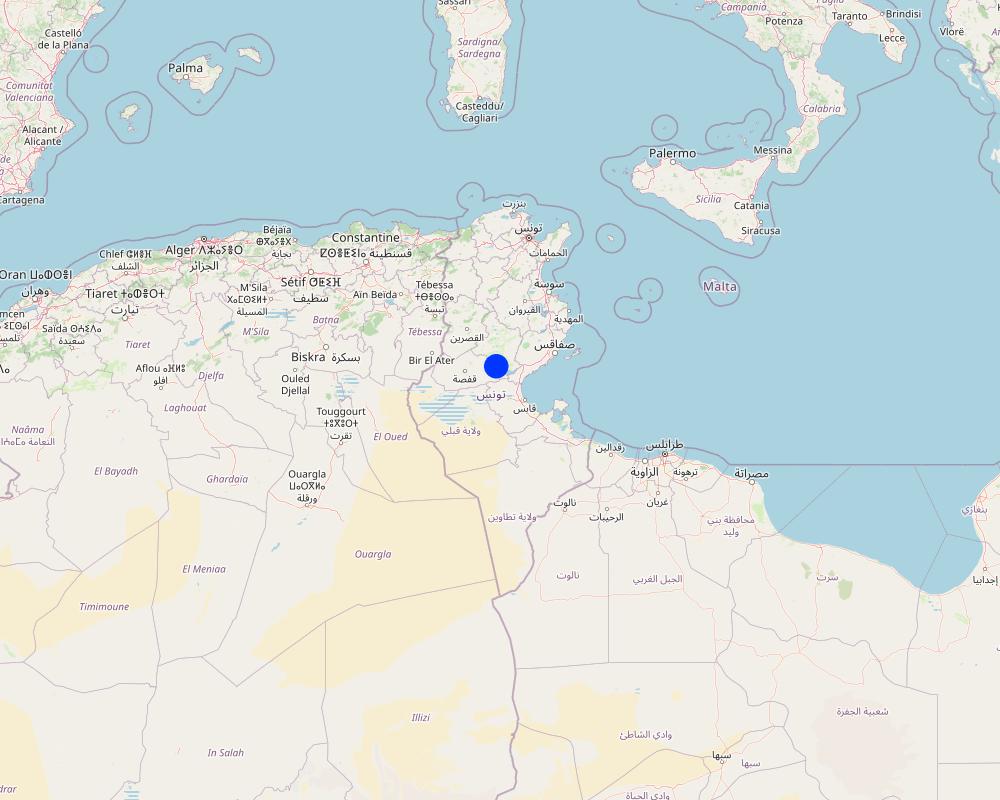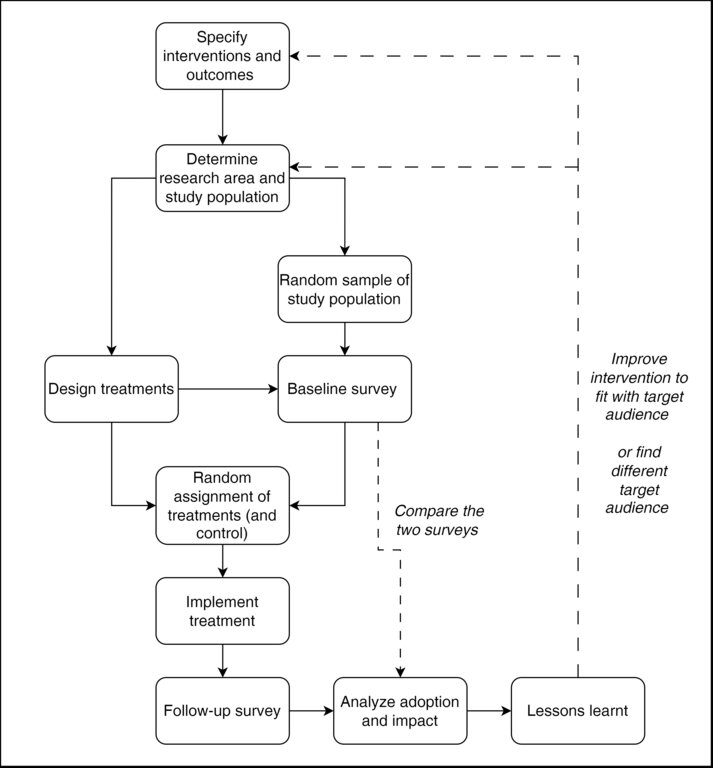Lessons learned from the "Mind the Gap" project: Improving Dissemination Strategies [Tunisie]
- Création :
- Mise à jour :
- Compilateur : Joren Verbist
- Rédacteur : –
- Examinateurs : William Critchley, Rima Mekdaschi Studer
approaches_7123 - Tunisie
Voir les sections
Développer tout Réduire tout1. Informations générales
1.2 Coordonnées des personnes-ressources et des institutions impliquées dans l'évaluation et la documentation de l'Approche
Personne(s) ressource(s) clé(s)
Innovation specialist:
Rudiger Udo
International Center of Agricultural Research in Dry Areas (ICARDA)
Tunisie
Gender specialist:
Najjar Dina
International Center of Agriculture Research in the Dry Areas (ICARDA)
Maroc
Natural Resource Economist:
Dhehibi Boubaker
International Center of Agricultural Research in Dry Areas (ICARDA)
Tunisie
Werner Jutta
German Ministry of Agriculture
Derbel Sondos
AVFA (National Agricultural Training and Extension Service)
Nom du projet qui a facilité la documentation/ l'évaluation de l'Approche (si pertinent)
ICARDA Institutional Knowledge Management InitiativeNom du ou des institutions qui ont facilité la documentation/ l'évaluation de l'Approche (si pertinent)
International Center for Agricultural Research in the Dry Areas (ICARDA) - Liban1.3 Conditions relatives à l'utilisation par WOCAT des données documentées
Quand les données ont-elles été compilées (sur le terrain)?
2019
Le compilateur et la(les) personne(s) ressource(s) acceptent les conditions relatives à l'utilisation par WOCAT des données documentées:
Oui
1.4 Références au(x) questionnaire(s) sur les Technologies de GDT
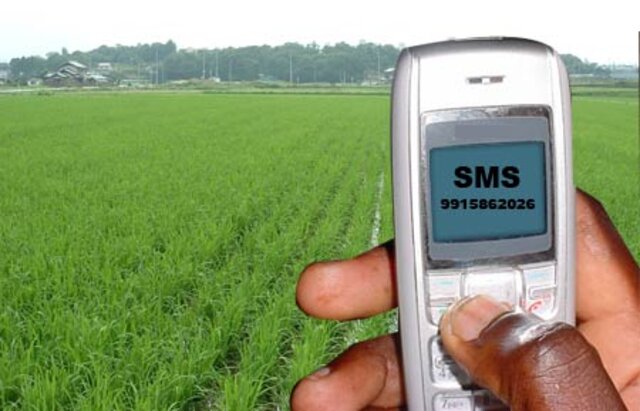
ICT2Scale – supporting smallholder farmers with cellphone-based services … [Tunisie]
The ICT2Scale project contributes to better land management by supplying smallholder farmers with targeted SMS messages on diverse agricultural practices. This enables them to optimize resources and adopt more sustainable methods, consequently improving livelihoods in remote areas.
- Compilateur : Joren Verbist
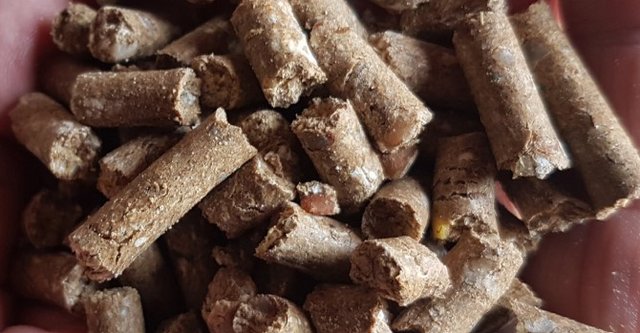
Small-Scale Nutrient-Dense Pellet Production [Tunisie]
Compressing agro-industrial by-products produces nutrient-dense livestock feed pellets that can compete with expensive and imported alternatives. This innovation consists of a small-scale compressor or "pelletizer" and formulae to create feed pellets of sufficient quality with locally available inputs.
- Compilateur : Joren Verbist
2. Description de l'Approche de GDT
2.1 Courte description de l'Approche
The “Mind the Gap” project researched the adoption gap between agricultural research and women and men farmers. Its objective was to determine most effective and cost-efficient technology transfer strategies and give recommendations to national extension institutes and development partners to adapt their scaling strategy
2.2 Description détaillée de l'Approche
Description détaillée de l'Approche:
Research into innovative agricultural technologies for the livestock-barley system in semi-arid Tunisia has yielded success. However, adoption of these has remained low for decades, not only in Tunisia but across developing countries (Noltze et al. 2012; DFID 2014; Syngenta Foundation 2015). Bridging this 'adoption gap' has proved to be a challenge, and there has been limited emphasis on improving agricultural extension methods. In this context, the International Center for Agricultural Research in Dry Areas (ICARDA) together with partners set up the "Mind the Gap" project, funded by the BMZ and GIZ.
This project aimed to fill this gap by developing and testing new models for transferring sustainable technology packages to smallholder farmers. Four transfer models were implemented across four test groups:
T1: Technical training and SMS.
T2: Technical training, SMS, economic, and organizational training.
T3: Technical training, SMS, economic and organizational training, with a focus on female empowerment.
T4: Technical training, SMS, and female empowerment.
The transferring models are thus (a) Technical training and SMS; (b) Economic training; (c) Organization training; (d) Female empowerment.
Technical training and SMS involved sending weekly text messages containing technical and organizational information to 560 farmer households from August 2017. Workshops were conducted in 2017 and 2018 to develop these messages in collaboration with regional extension services and other stakeholders.
Economic training included one-day sessions in 2017 to demonstrate the economic benefits of innovations. In 2018, a Farmer Business School (FBS) approach was adopted to enhance farmers' entrepreneurial skills, with a tailored curriculum and seven five-day courses delivered to 280 farmer households.
The organizational training aimed to enhance farmers' understanding cooperative management. Through classroom sessions and visits to existing cooperatives, farmers received insights into cooperative creation, management challenges, and the benefits of collective action.
Female empowerment activities engaged women from 280 farmer households, focusing on visits to female cooperatives and sensitization events to encourage their participation in agricultural activities and access to credit.
The adoption of two innovations was evaluated through this methodology. The first innovation, "Kounouz," is an improved barley variety designed to better withstand drought conditions. The second innovation involves feedblocks, also known as nutrient-dense pellets, which serve as an alternative livestock feed made from by-products.
The project rigorously evaluated these transfer models through randomized controlled trials, focusing on their impact on innovation adoption rates and cost-efficiency. The combined approach, carried out under T3, showed the highest adoption rates, particularly among female-headed households. Field visits were identified as a significant contributor to technology adoption, while SMS proved most cost-effective.
Most importantly, it showed that the four transferring models should be used in combination for the highest adoption.
In conclusion, the research underscores that addressing the 'adoption gap' in agricultural innovation requires comprehensive approaches encompassing technical, economic, organizational, and gender empowerment training. By combining these elements significant strides can be made in cost-efficiently enhancing technology adoption rates among smallholder farmers, offering valuable insights for agricultural extension efforts not only in Tunisia but also across the MENA region and potentially beyond.
Acknowledgement:
We would like to thank BMZ/ GIZ who supported this innovative research through their contributions to the “Mind the Gap” project as well as Tunisian NARES (INRAT, AVFA, OEP, CRDA) for co-implementing project activities.
2.3 Photos de l'approche
2.5 Pays/ région/ lieux où l'Approche a été appliquée
Pays:
Tunisie
Map
×2.6 Dates de début et de fin de l'Approche
Indiquez l'année de démarrage:
2016
Date (année) de fin de l'Approche (si l'Approche n'est plus appliquée):
2019
2.7 Type d'Approche
- fondé sur un projet/ programme
2.8 Principaux objectifs de l'Approche
To better understand the adoption gap of new sustainable farming technologies, and discover cost-efficient and effective approaches to improve adoption of these technologies.
2.9 Conditions favorisant ou entravant la mise en œuvre de la(des) Technologie(s) appliquée(s) sous l'Approche
normes et valeurs sociales/ culturelles/ religieuses
- entrave
Participation of women at trainings was sometimes low (no availability to due household tasks)
disponibilité/ accès aux ressources et services financiers
- favorise
Access to financial resources allowed purchase of technologies (Kounouz seeds or feed blocks)
cadre institutionnel
- favorise
The right institutions were selected (OEP, INRAT, AVFA) to implement MtG project activities
collaboration/ coordination des acteurs
- favorise
Collaboration between the partners (NARES) was good and important; eg INRAT multiplied Kounouz seeds ; OEP and CRDA distributed Kounouz seeds and AVFA trained farmers on Kounouz production
cadre politique
- entrave
Feed block production has strict regulations
connaissances sur la GDT, accès aux supports techniques
- favorise
Technical support to practice the technology (eg feed block composition) is important and was guaranteed by OEP
marchés (pour acheter les intrants, vendre les produits) et prix
- entrave
Prices of substitute feed like subsidized wheat bran and barley hinder the adoption of feed blocks.
charge de travail, disponibilité de la main-d'œuvre
- entrave
Workload for feedblock production is high and manpower not always available.
3. Participation et rôles des parties prenantes impliquées dans l'Approche
3.1 Parties prenantes impliquées dans l'Approche et rôles
- exploitants locaux des terres / communautés locales
No communities but individual farmers
Inviting farmers to trainings,
Organization of baseline and follow up survey with OEP
- Spécialistes de la GDT/ conseillers agricoles
AVFA (National Agricultural Training and Extension Service)
CTV (Local Extension Service)
OEP (Livestock and Pasture Office)
AVFA:
Organizational and economic trainings (FBS, BUS, cooperatives, etc) to 280 HH
Organized logistics (transport, restoration, training room)
OEP:
Technical training on feed blocks to 560 HH
Distribution of inputs to CTV, selection of cooperatives.
- chercheurs
University of Goettingen
INRAT (National Agricultural Research Institute)
University of Goettingen:
Project development, PhD students, data collection for baseline and follow up survey
INRAT:
Development of new barley variety (Kounouz) in collaboration with ICARDA
Technical training on barley with OEP to 560 HH
- organisation internationale
ICARDA
GIZ
ICARDA: Overall technical and administrative coordination
GIZ: Trained AVFA trainers on FBS and BUS
Si plusieurs parties prenantes sont impliquées, indiquez l'organisme chef de file ou l'institution responsable:
ICARDA
3.2 Participation des exploitants locaux des terres/ communautés locales aux différentes phases de l'Approche
| Participation des exploitants locaux des terres/ communautés locales | Spécifiez qui était impliqué et décrivez les activités | |
|---|---|---|
| initiation/ motivation | passive | The experiments were designed and set up by the research agency. |
| planification | passive | Methodology was also determined by the research agency. |
| mise en œuvre | interactive | The approach to dissemination that proved successful was interactive. |
| suivi/ évaluation | passive | The experiment was monitored by the research agency. |
3.3 Diagramme/ organigramme (si disponible)
3.4 Prises de décision pour la sélection de la Technologie/ des Technologies
Indiquez qui a décidé de la sélection de la Technologie/ des Technologies à mettre en œuvre:
- principalement les spécialistes de la GDT, après consultation des exploitants des terres
Expliquez:
There was a strong focus on research rather than implementation, which required scientific expertise rather than land user knowledge.
Spécifiez sur quelle base ont été prises les décisions:
- l'évaluation de connaissances bien documentées en matière de GDT (prises de décision fondées sur des preuves tangibles)?
- les résultats de recherches?
4. Soutien technique, renforcement des capacités et gestion des connaissances
4.1 Renforcement des capacités/ formation
Une formation a-t-elle été dispensée aux exploitants des terres/ autres parties prenantes?
Oui
Spécifiez qui a été formé:
- exploitants des terres
Si pertinent, spécifiez le genre, l'âge, le statut, l'ethnie, etc.
Land user, with a strong focus on females for two treatment groups.
Formats de la formation:
- entre agriculteurs (d'exploitants à exploitants)
- zones de démonstration
- réunions publiques
- cours
Thèmes abordés:
The four main trainings were given:
-Technical with SMS
-Economic (e.g., better farm management)
-Organizational (e.g., setting up farmer cooperatives)
-Female empowerment
4.2 Service de conseils
Les exploitants des terres ont-ils accès à un service de conseils?
Oui
Spécifiez si le service de conseils est fourni:
- dans les champs des exploitants?
- dans des centres permanents
Décrivez/ commentez:
Advice was given through the training which included both on-site (e.g., demonstration fields) and meetings
4.3 Renforcement des institutions (développement organisationnel)
Des institutions ont elles été mises en place ou renforcées par le biais de l'Approche?
- oui, modérément
Spécifiez à quel(s) niveau(x), ces institutions ont été renforcées ou mises en place:
- local
Décrivez l'institution, ses rôles et responsabilités, ses membres, etc.
Training sessions regarding cooperation can be organized.
Précisez le type de soutien:
- renforcement des capacités/ formation
4.4 Suivi et évaluation
Le suivi et l'évaluation font ils partie de l'Approche? :
Oui
Commentaires:
Four treatment groups were made based on different combinations of training, they were evaluated for their adoption of Kounouz barley and feed blocks.
Si oui, ce document est-il destiné à être utilisé pour le suivi et l'évaluation?
Oui
4.5 Recherche
La recherche a-t-elle fait partie intégrante de l’Approche?
Oui
Spécifiez les thèmes:
- sociologie
- économie/ marketing
- technologie
Donnez plus de détails et indiquez qui a mené ces recherches:
Several research papers were published with authors from different partners.
5. Financement et soutien matériel externe
5.1 Budget annuel de la composante GDT de l'Approche
Indiquez le budget annuel de la composante GDT de l'Approche en $ US:
400000,00
Commentez (par ex. principales sources de financement/ principaux bailleurs de fonds):
GIZ/BMZ
5.2 Soutiens financiers/ matériels fournis aux exploitants des terres
Les exploitants des terres ont-ils reçu un soutien financier/ matériel pour la mise en œuvre de la Technologie/ des Technologies?
Non
5.3 Subventions pour des intrants spécifiques (incluant la main d'œuvre)
- aucun
5.4 Crédits
Des crédits ont-ils été alloués à travers l'Approche pour les activités de GDT?
Non
5.5 Autres incitations ou instruments
D'autres incitations ou instruments ont-ils été utilisés pour promouvoir la mise en œuvre des Technologies de GDT?
Non
6. Analyses d'impact et conclusions
6.1 Impacts de l'Approche
Est-ce que l'Approche a autonomisé les exploitants locaux des terres, amélioré la participation des parties prenantes?
- Non
- Oui, un peu
- Oui, modérément
- Oui, beaucoup
Est-ce que l'Approche a aidé les exploitants des terres à mettre en œuvre et entretenir les Technologies de GDT?
- Non
- Oui, un peu
- Oui, modérément
- Oui, beaucoup
Est-ce que l'Approche a mobilisé/ amélioré l'accès aux ressources financières pour la mise en œuvre de la GDT?
- Non
- Oui, un peu
- Oui, modérément
- Oui, beaucoup
Est-ce que l'Approche a amélioré l'égalité entre hommes et femmes et autonomisé les femmes et les filles?
- Non
- Oui, un peu
- Oui, modérément
- Oui, beaucoup
Est-ce que l'Approche a conduit à améliorer la sécurité alimentaire et/ou la nutrition?
- Non
- Oui, un peu
- Oui, modérément
- Oui, beaucoup
6.2 Principale motivation des exploitants des terres pour mettre en œuvre la GDT
- augmenter la production
- augmenter la rentabilité/ bénéfice, rapport coûts-bénéfices
- réduire les risques de catastrophe
- affiliation à un mouvement/ projet/ groupe/ réseaux
- améliorer les connaissances et compétences en GDT
6.3 Durabilité des activités de l'Approche
Les exploitants des terres peuvent-ils poursuivre ce qui a été mis en œuvre par le biais de l'Approche (sans soutien extérieur)?
- oui
6.4 Points forts/ avantages de l'Approche
| Points forts/ avantages/ possibilités du point de vue du compilateur ou d'une autre personne ressource clé |
|---|
| Highest adoption rate for Kounouz was in T3 (61% in 2017 and 33% in 2018) where the whole package of extension was provided (technical training, SMS + economic and organizational training +female empowerment + access to input). This indicates that different adoption models should be combined rather than singled out. |
| The treatment groups T3 and T4 which received the female empowerment training have the highest Kounouz variety adoption rates in 2018 (T3 = 33%, T4 =24%). The implication of women in the project has a positive influence on the adoption of innovative technologies. The gender dimension should be considered as a vector of adoption of new technologies especially in Tunisian agriculture. |
|
In terms of cost, the government can choose according to the available budgetary resources: i) Highest level of technology adoption with the highest cost of trainings 34% in T3 with a total cost of trainings estimated at 900 TND per person ii) Medium technology adoption rate with a lower cost of trainings 22% in T1 with a total cost of trainings estimated to 230 TND per person). T3 is most effective but T1 is more cost efficient. |
| The strong collaboration between four public research and extension institutions (OEP, INRAT, AVFA and CTV) and one international agricultural institution (ICARDA) is one of the important factors for adoption and transfer of knowledge |
6.5 Faiblesses/ inconvénients de l'Approche et moyens de les surmonter
| Faiblesses/ inconvénients/ risques du point de vue du compilateur ou d'une autre personne ressource clé | Comment peuvent-ils être surmontés? |
|---|---|
| Concerning the technical extension methods, the field visit (with an intermediate cost) especially done in the similar areas is more efficient than the training (with a high cost) and the SMS text message (with a very low cost). | However, these extension methods are complementary and encourage the project’s farmers to adopt innovative technologies. |
7. Références et liens
7.1 Méthodes/ sources d'information
- visites de terrain, enquêtes sur le terrain
- interviews/ entretiens avec les spécialistes/ experts de GDT
- compilation à partir de rapports et d'autres documents existants
7.3 Liens vers les informations pertinentes disponibles en ligne
Titre/ description:
Boubaker Dhehibi, Mohamed Zied Dhraief, Udo Rudiger, Aymen Frija, Jutta Werner, Liza Straussberger, Barbara Rischkowsky. (13/4/2022). Impact of improved agricultural extension approaches on technology adoption: Evidence from a randomised controlled trial in rural Tunisia. Experimental Agriculture, 58, pp. 1-16.
URL:
https://hdl.handle.net/20.500.11766/67344
Titre/ description:
Boubaker Dhehibi, Udo Rudiger. (24/12/2019). Synthesis Mind the Gap.
URL:
https://hdl.handle.net/20.500.11766/10505
Titre/ description:
Udo Rudiger. (16/12/2019). Mind the Gap: Improving Dissemination Strategies to Increase Technology Adoption by Smallholders. Beirut, Lebanon: International Center for Agricultural Research in the Dry Areas (ICARDA).
URL:
https://hdl.handle.net/20.500.11766/10471
Titre/ description:
Samar Zaidi, Boubaker Dhehibi, Mohamed Zied Dhraief, Mohamed Arbi Abdeladhim. (22/3/2023). Résilience des ménages face à l’insécurité alimentaire et au changement climatique dans les régions du centre et du nord-est de la Tunisie: Une analyse empirique. New Medit, 22 (1), pp. 19-34.
URL:
https://hdl.handle.net/20.500.11766/68229
Titre/ description:
Boubaker Dhehibi, Jutta Werner, Matin Qaim. (7/3/2018). Designing and Conducting Randomized Controlled Trials (RCTs) for Impact Evaluations of Agricultural Development Research: A Case Study from ICARDA’s ‘Mind the Gap’ Project in Tunisia. Beirut, Lebanon: International Center for Agricultural Research in the Dry Areas (ICARDA).
URL:
https://hdl.handle.net/20.500.11766/8209
Titre/ description:
Boubaker Dhehibi, Jutta Werner, Hloniphani Moyo. (18/9/2018). Developing a policy framework for agricultural extension systems in Tunisia. Beirut, Lebanon: International Center for Agricultural Research in the Dry Areas (ICARDA).
URL:
https://hdl.handle.net/20.500.11766/8390
Titre/ description:
Quang Bao Le, Jutta Werner, Boubaker Dhehibi, Mounir Louhaichi, Chandrashekhar Biradar. (10/11/2019). Functionally context socio-ecological type (fCSET) approach to support outscaling of agricultural innovation options.
URL:
https://hdl.handle.net/20.500.11766/10801
Titre/ description:
Boubaker Dhehibi, Udo Rudiger, Mohamed Zied Dhraief. (9/9/2019). Factors Influencing Farmers’ Decisions to Adopt Improved Technologies in Semi-Arid Farming Systems: A case study of the barley variety Kounouz and feed blocks technology in Tunisia. Beirut, Lebanon: International Center for Agricultural Research in the Dry Areas (ICARDA).
URL:
https://hdl.handle.net/20.500.11766/10223
Titre/ description:
Hloniphani Moyo, Jutta Werner, Boubaker Dhehibi, Udo Rudiger, Cherifa Saidi. (14/4/2019). Improving dissemination strategies to increase technology adoption by smallholder farmers in Tunisia. Beirut, Lebanon: International Center for Agricultural Research in the Dry Areas (ICARDA).
URL:
https://hdl.handle.net/20.500.11766/9813
Liens et modules
Développer tout Réduire toutLiens

ICT2Scale – supporting smallholder farmers with cellphone-based services … [Tunisie]
The ICT2Scale project contributes to better land management by supplying smallholder farmers with targeted SMS messages on diverse agricultural practices. This enables them to optimize resources and adopt more sustainable methods, consequently improving livelihoods in remote areas.
- Compilateur : Joren Verbist

Small-Scale Nutrient-Dense Pellet Production [Tunisie]
Compressing agro-industrial by-products produces nutrient-dense livestock feed pellets that can compete with expensive and imported alternatives. This innovation consists of a small-scale compressor or "pelletizer" and formulae to create feed pellets of sufficient quality with locally available inputs.
- Compilateur : Joren Verbist
Modules
Aucun module trouvé



